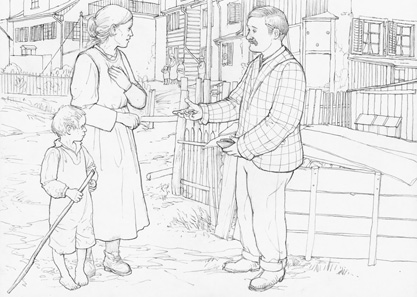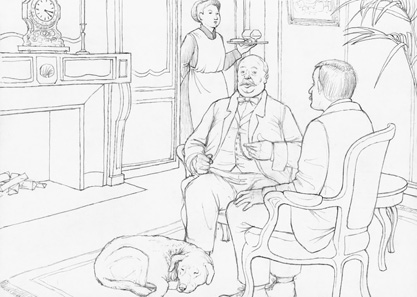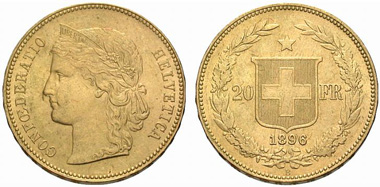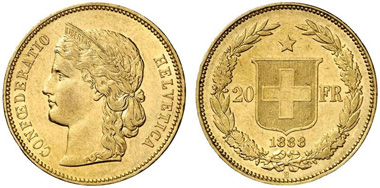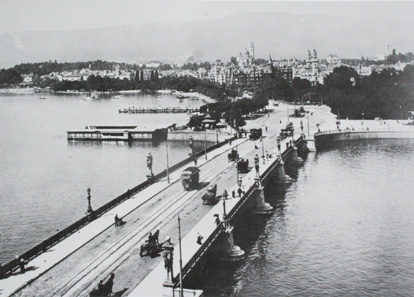by courtesy of MoneyMuseum
Our series takes you along for the ride as we explore the Zurich of times past. This episode is about the different worlds in the year 1887. An American journalist first visited Aussersihl, a suburb of Zurich, and afterwards a businessman in his villa. Much like a good DVD, this conversation comes with a sort of “making of” – a little numismatic-historical backdrop to underscore and illustrate this conversation.
September 1887. John Fix an American journalist visits the Aussersihl a suburb of Zurich. There he engages in a conversation with an inhabitant. Drawn by Dani Pelagatti / Atelier bunterhund. Copyright MoneyMuseum Zurich.
Fix: (to himself) Lord Heavens, these children. They wear only a vest! These little crooked legs, isn’t that tuberculosis of the bone? And these joints. This is really a slum. Living must be hell here! I need an interview! That will be easy to sell. (break, then turned to a passer-by) Excuse me, I’m writing for the “Herald Tribune”, New York. Could you answer some questions for me?
Inhabitant: (sullen) What do you want to know?
You’re living here?
Where else?
Could you describe your accommodation?
A hole with three rooms which costs us 350 francs a year.
And there you’re living with your husband and the children. Children, how many children do you have?
Three are still alive.
So, there are five persons in your apartment.
Unfortunately not. It is summertime. The seasonal workers are here. And of course we let out one of the rooms. It helps to pay the lease.
You mean you have to cut down expenses.
(exhausted, ironical) To cut down expenses? Good God, you have no idea about our life.
Tell me about it.
We came from the countryside. We couldn’t stay there any longer. Too much famine. We thought that it’ll be better in the town. But nobody waited for my husband. He didn’t know a profession. Now he’s working as a street-porter at the station.
What does he earn?
In theory he gets 50 rappen an hour. If he has to carry something heavy, he will get even 75 rappen. It works out in summer, when all the tourists are here. They always need a street-porter. But in winter he often has to wait hours for a commission. (sighs) And moreover, he wastes the little money he earns on drink.
Alcohol is a problem?
You may well say so.
The money which your husband earns isn’t enough for your family’s maintenance?
No, I also have to go to work. But the cotton factory where I work has problems. They can’t give work to me every day.
So you have to starve?
No, it’s not so bad. Somehow it’s always possible to buy at least some potatoes. And you can buy them on credit. They cost about 7 rappen per kilo and they are filling. But I’m dreaming of serving my children a real meal with bread and beef, milk and, perhaps even with butter.
What would a meal like that cost?
The kilo of bread costs about 30 rappen at the consumer cooperative. They charge nearly 20 rappen for the liter of milk. I could get a kilo of really good beef for 1 franc 50. But the butter is completely beyond my means. You’re paying 60 rappen for half a pound!
That comes up to 2 francs 60. (gives her a few coins) Here, my dear, serve this feast to your family.
September 1887. The American journalist John Fix visits the businessman Keller in his villa located in the high-class suburban district of Enge. Drawn by Dani Pelagatti / Atelier bunterhund. Copyright MoneyMuseum Zurich.
Businessman: Cigars, please, Mister Fix, or do you prefer a cognac?
Journalist: Both, if it’s no trouble, Mister Keller.
Not at all. (turned to his maid) Balbine, two cognacs – and don’t forget the cigars! (turned to Fix) How do you like our beautiful city of Zurich?
That’s not easy to say. Today I visited the Aussersihl. I never expected to see a slum so close to Zurich.
Indeed, it’s awful. My wife and I, we give freely each month to the association for the sake of the poor. Did you hear of the great charity bazaar in the Tonhalle? We helped organizing it. We even copied an oriental street featuring a Turkish cafe. What a success! We realized a net profit of 59.300 francs for the poor.
Impressive.
And what else did you see in Zurich?
The usual, of course the new landing-place at the shore of the Zurich Sea.
It was inaugurated on July 2. What a celebration!
Then I made a railroad excursion to Lucerne.
I’ve heard that there are special rates on Sundays. 8 francs for the complete tour.
That’s correct; unfortunately I went on a weekday, which cost 2 francs more.
2 francs is a lot of money.
Indeed, yesterday I ate a marvelous trout at the hotel “Baur au Lac” for the same amount of money.
(laughs) Last time I had a sole à la Colbert – which also cost 2 francs. But I thought the champagne to be rather expensive with 12 francs.
(laughs) You certainly ordered a Veuve Cliquot.
(laughs again) Certainly, is there really an alternative?
These hotels here in Zurich are fabulous.
Yes. We try to satisfy our tourists. And they appreciate it. This August 21.490 foreigners stayed overnight in Zurich.
As much? I never had thought so.
How many more days will you stay?
Three days.
So I’ve a few recommendations for you. You have to see the Helmhaus, where the prehistoric objects are exhibited which were found in the lake dwellings of the Zurich Sea. The entrance fee is 50 rappen. Then you have to visit our new Swiss Federal Institute of Technology. From the terrace you will have a wonderful view over the whole of Zurich. And our university owns an outstanding collection of Natural History. It is open only on Thursday, but the janitor will open whenever you want for a tip of 50 rappen. And don’t forget the library. It’s also 50 rappen entrance fee, but it’s worth it. Oh, I nearly forgot our new chemistry lab. Its construction costs amounted to 1.8 million Francs, but in return we now have the most modern lab in Europe. And then…
Stop, that’s enough. I’m staying three more days, not three more weeks.
Switzerland. 20 franks 1896, Bern. From auction sale Münzen & Medaillen GmbH 22 (2007) 1750.
Making of:
There have always been such thing as rich and poor, but rarely the differences between the well-to-do and the impoverished were as conspicuous as during the first half of the 19th century. One reason was that, as a consequence of the industrialization, more and more inner cities came into being in close proximity to mixed or even affluent residential areas, where almost exclusively poor people lived: more and more inhabitants of those crisis-stricken areas sought their fortune in the city, hoping to get themselves a well-paid work in a factory. They arrived with only little money, and hence were looking for inexpensive housing. As a consequence, they moved into those areas where they didn’t had to pay so much, i.e. the slums of those days.
Zurich’s best known poor district was located in the Aussersihl community where the rents were three times cheaper than in uptown Enge – admittedly, the apartments were smaller accordingly. In 1896, the average annual price for an apartment in Aussersihl was 641 franks, whereas in Enge 1,859 franks had to be paid. The one who owned an apartment in Enge had 5.23 rooms at his disposal, in contrast to Aussersihl where the average was 3.65 rooms. In regard to the price per square meter, therefore, the difference wasn’t that big: in Aussersihl the square meter cost 4.01 franks, in Enge 4.51 franks. Already in those days, cheap didn’t necessarily mean inexpensive. In order to earn the money needed for the rent, four out of five tenants accepted paying guests into their house whereas in Enge only two out five did so.
For most inhabitants of Aussersihl the living conditions were appalling. We took the description of the American journalist at the beginning of our audio drama out of the autobiography of a contemporary witness from Zurich, i.e. the physician Fritz Brupbacher. The original version of the text reads as follows: „And these people were for the most part people who fared badly. They had many children. And with their dribbling noses they’re running around, often on the streets, wearing only undershirts, with their rickety bodies, stooping legs and thin bones, with skin rashes, covered with glands. Siblings, born eleven months apart, – there are masses of them. (…) No heating is put on, no lighting, because the money needed for that could be saved. Hence, even where there were several rooms available, all people laid in the same room because of the heat – an entire heard in only in one or two beds.”
Consequently, parsimony was matter of course to all women of Aussersihl. Admittedly, for our conversation we have chosen a family with an income moving at the lower end of the scale. Due to the long waiting hours in between his orders, a servant didn’t earn much more than a simple unskilled laborer who got himself 3.10 franks daily salary on average for 10 hours of working. Much more in demand were skilled workers who could earn more than two times that salary. A founder in a metal factory, for example, earned 52 or so rappen per hour, a typographer – and this was one of the most respected professions prior to the turn of the century – even 62 rappen. Such salaries enabled some families to acquire a certain prosperity, which, in turn, made them looking for apartments in another district of the city with better education opportunities for their offspring. Only the newcomers remained in the slums – and those who didn’t succeed but eked out a living, being on the breadline, those who had abandoned the hope for a better future long ago.
Switzerland. 20 franks 1888 B, Bern. From auction sale Fritz Rudolf Künker GmbH & Co. KG 218 (2012) 5414.
It was nothing unusual in the second half of the 19th century that a woman contributed when the husband’s income was too poor. The majority of them worked in the textile industry. Unfortunately, it was precisely that sector that suffered a decline between 1886 and 1890 to the effect that many women, just like our female protagonist, couldn’t find themselves a job in the factories on a daily basis.
A silver lining in the grim social surrounding were the attempts for help and self-help on the part of rich fellow-citizens from Zurich. A case in point is the Consumer Society, mentioned in our conversation, which had been founded as early as 1851 on the initiative of J. J. Treichler and Karl Bürkli. The Consumer Society organized the purchase of food on a large scale and sold them at a cheaper rate to their members in comparison to what a private grocer would have demanded.
Another thing that was quite characteristic of those decades was the countless charity events where the ‘rich’ collected for the benefit of the ‘poor’. The charity bazaar our journalist refers to actually did take place. Such events enabled the attendants to get the feeling that they were doing something good, in an atmosphere that was nice and befitted their social status, without having to deal with the real problem, i.e. poverty.
Quay Bridge around 1890. Source: Wikipedia.
By that, we have finally arrived at the ‘other side’ of 1887, with Felix Keller and the second conversation. He represents the type of successful entrepreneur that enjoys every advantage of prospering Zurich, not only in regard to economy but also culturally. The so-called Second Industrial Revolution, when specialized companies in the machinery and electrical industry replaced the traditional branches, turned Zurich into a hub of Swiss commercial life. That released means for expanding and rebuilding the city. After 1870 the Bahnhofstrasse was extended until it reached the Lake, for example; and the new Stadthausquartier came into being. In 1884, the Quay Bridge followed, and in 1887 the Quay constructions, which our Felix Keller refers to during their opening ceremony on July 2, 1887.
Thanks to all these buildings and the unique, central location of Zurich in the modern railway system the city became a center of tourism that attracted visitors with its state-of-the-art hotels. In August 1887 alone, 21,490 visitors came to stay for 2 ½ nights on average! There was plenty to see. The recommendations our Zurich businessman made to the journalist are all taken from a small tourist guide a visitor thirsting for education could acquire for 25 rappen in 1887.
Baur au Lac Hotel, 1910. Source: Wikipedia.
As a matter of fact, the prices for the dishes our protagonists have consumed in Baur au Lac Hotel are likewise authentic. Admittedly, the information doesn’t date back to 1887. The company’s archive lacks any invoice for that year.
Next time it is about nothing less than a revolution – in the Swiss food retail sector…
You can find all other parts of the series here.
The texts and graphics come from the brochure of the exhibition of the same name in the MoneyMuseum, Zurich. Excerpts with sound are available as video here.




